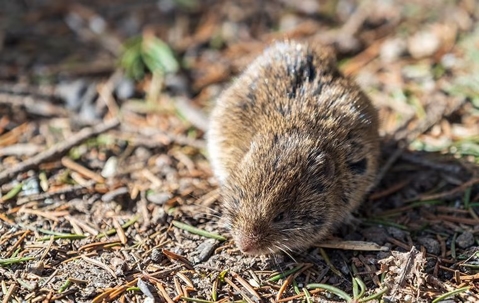Understanding Vole Yard Damage and How to Combat It
Understanding Vole Yard Damage and How to Combat It
Blog Article
Comprehensive Guide to Effective Vole Parasite Control: Problem Identification and Therapy Techniques
In the realm of effective bug control, vole problems position an one-of-a-kind difficulty that requires a calculated strategy. These small rodents, frequently incorrect for computer mice, can inflict chaos on gardens, grass, and plants if left untreated. Recognizing the indicators of vole visibility and applying targeted treatment techniques are important components of a successful pest monitoring plan. By checking out the subtleties of vole actions, recognizing key indicators of problem, and assessing a series of control choices, one can establish a comprehensive approach to fight these elusive pests.
Recognizing Vole Actions
Vole behavior is identified by their delving routines and fast recreation prices, making them a challenging parasite to control properly. These small rodents commonly develop elaborate tunnel systems underground, using them for shelter, food storage space, and transport. Voles are herbivores, taking in a variety of plants, bulbs, origins, and turfs, which can create significant damages to gardens, orchards, and lawns. Their fast reproductive rate further makes complex control efforts, with females efficient in producing several trashes in a single year, each consisting of several offspring.
Voles are most active throughout the morning and night hours, spending the bulk of their time foraging for food. Their delving habits not only interrupt yards and gardens however additionally make them testing to find and get rid of. Comprehending vole behavior is critical for efficient parasite control techniques. By recognizing their burrow locations, keeping track of feeding locations, and carrying out targeted control approaches, such as trapping or environment alteration, vole problems can be managed effectively.
Indications of Vole Infestation

Prevention Approaches
Executing efficient avoidance methods is important in minimizing vole invasions and guarding greenery from their destructive feeding habits (vole lawn damage). To avoid vole infestations, it is vital to begin by eliminating possible food resources and shelter. Keep yard and plants cut short, get rid of weeds and debris, and maintain a clean yard or grass to make the location much less attractive to voles. Setting up obstacles such as equipment fabric or underground fencing can also assist discourage voles from getting in particular locations. Furthermore, minimizing excess moisture by taking care of dripping pipelines and making sure proper drain can make the setting much less congenial for voles.
Regularly inspecting the property for indications of vole task, such as paths and delve openings, is vital for very early discovery and punctual action. If vole activity is this content believed, think about using repellents or traps purposefully placed near their paths.
Non-Lethal Control Approaches
To properly manage vole populations while focusing on gentle methods, non-lethal control approaches provide practical solutions for minimizing vole damage in landscapes and yards. One reliable approach is making use of physical barriers such as equipment blog here fabric or wire mesh to shield prone plants. These barriers can be hidden at the very least 12 inches deep and curved at a 90-degree angle to avoid voles from tunneling beneath. Furthermore, environment modification can discourage voles by decreasing their favored food resources and concealing areas. Keeping a well-mowed lawn, removing particles, and keeping greenery cut can make the atmosphere less enticing to voles.

Lethal Control Options
One reliable technique for dealing with vole infestations in gardens and landscapes involves the tactical use of lethal control choices. When faced with a serious vole problem that non-lethal approaches have failed to have, applying deadly control steps comes to be crucial. In general, when utilizing lethal control alternatives, it is important to do so properly and in accordance with regional laws to efficiently manage vole invasions.
Conclusion
To conclude, reliable vole pest control requires a thorough understanding of vole habits, identification of indications of infestation, application of prevention approaches, and use of both deadly and non-lethal control techniques. By integrating these methods, people can efficiently take care of vole populations and protect their residential property from damage. It is very important to resolve vole invasions without delay to avoid more problems and reduce the influence on the surrounding environment.
Offered the detailed passage systems and fast recreation prices particular of voles, recognizing the indications of vole invasion comes to be vital in effective pest control. One of the key indications of vole existence is the existence of surface area paths or trails in turf or snow, normally about 1-2 inches large, produced as voles take a trip between their burrows and food sources.To effectively take care of vole populations while prioritizing gentle approaches, non-lethal control strategies provide functional remedies for lowering vole damage in yards and landscapes.One efficient approach for attending to vole invasions in landscapes and gardens entails the calculated use of dangerous control choices. vole pest control.In final thought, reliable vole insect control needs a detailed understanding of vole actions, recognition of signs of invasion, implementation websites of avoidance approaches, and use of both deadly and non-lethal control approaches
Report this page